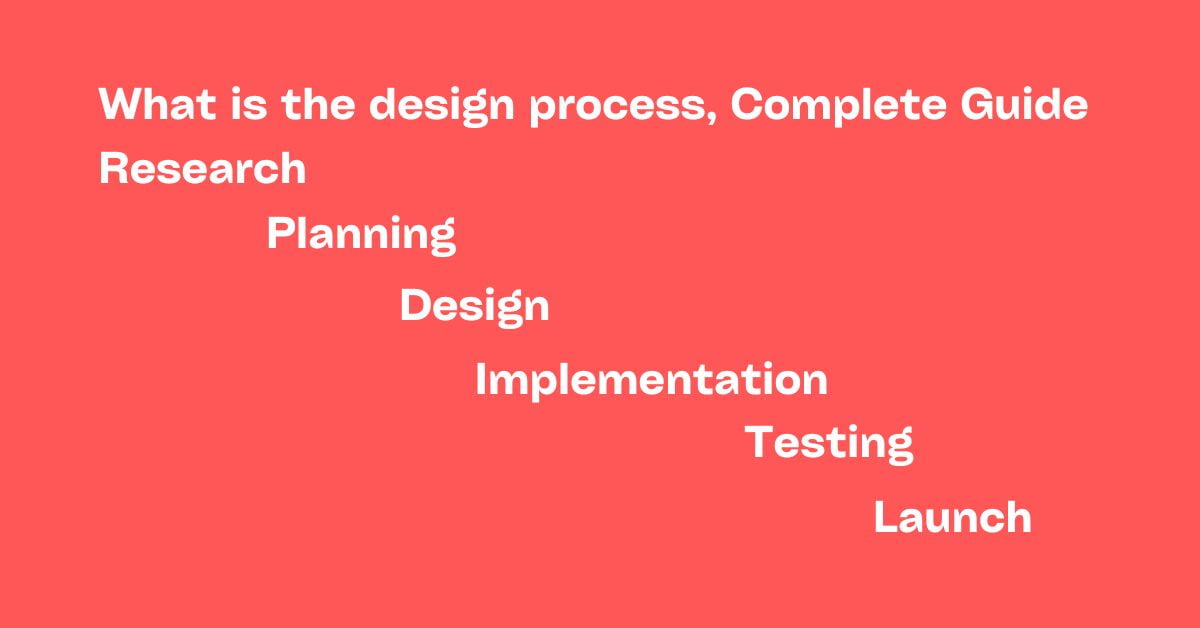|
Getting your Trinity Audio player ready... |
Design is more than just aesthetics; it’s a strategic process that transforms ideas into tangible solutions. Whether you’re crafting a digital product, a physical object, or a marketing campaign, understanding the design process is essential for success.
In this article, we’ll delve into the intricacies of the design process, exploring its importance, key stages, and how it contributes to creating exceptional outcomes. From understanding user needs to launching a final product, we’ll guide you through transforming concepts into reality.
Let’s embark on this exploration together and uncover the power of effective design.
What is the Design Process?
The design process is a methodical approach to identifying challenges, generating innovative ideas, and transforming them into practical solutions. It’s a framework that guides designers, developers, and other stakeholders through steps to transform an idea into a tangible product or service. While the specific steps may vary depending on the project, the core principles remain consistent.
Why it’s important?

A well-defined design process is crucial for several reasons:
- Improved Efficiency: It helps streamline the design process, reducing time and resources wasted on ineffective solutions.
- Enhanced User Experience: By focusing on user needs and preferences, it ensures that the final product meets user expectations.
- Reduced Costs: Identifying potential issues early in the process helps prevent costly mistakes and rework.
- Increased Innovation: By encouraging creativity and experimentation, it fosters the development of innovative solutions.
- Better Decision Making: The design process provides a structured approach to evaluating options and making informed decisions.
Steps Of the Design Process

The design process typically involves the following stages:
1. Research
This initial phase involves gathering information about the target audience, their needs, preferences, and behaviors. Market research, user interviews, and competitor analysis are common techniques used in this stage.
2. Planning
Based on the research findings, designers create a design brief outlining the project’s goals, objectives, and target audience. This stage also involves defining the project scope and timeline.
3. Design
This is the creative phase where designers develop concepts, create sketches, and build prototypes. The focus is on generating ideas and exploring different design possibilities.
4. Implementation
The design is transformed into a tangible product or service. This stage involves development, coding, and production.
5. Testing
The product or service is evaluated to ensure it meets the design specifications and user requirements. User testing and usability testing are essential components of this stage.
6. Launch
The final product is introduced to the market or users. This may involve marketing campaigns, product launches, and user onboarding.
Conclusion
The design process is an iterative and flexible framework that can be adapted to various projects. By following a structured approach, designers can increase the likelihood of creating successful and user-centered products or services. While there may be variations in the specific steps, the overall goal remains the same: to create solutions that meet user needs and exceed expectations.
FAQ
- Can I skip any steps in the design process? While it’s possible to skip steps, it is generally not recommended. Each step plays a crucial role in the overall success of the project
- How long does the design process take? The duration of the design process varies depending on the project’s complexity and scope.
- Can I use the design process for any type of project? Yes, the design process can be applied to a wide range of projects, from product design to service design and even website development.
- What is the role of user feedback in the design process? User feedback is essential throughout the design process. It helps inform design decisions and ensures that the final product meets user needs.
- What is the role of user feedback in the design process? User feedback is essential throughout the design process. It helps inform design decisions and ensures that the final product meets user needs.
What Is Figma And How To Use? Complete Guide
The Comprehensive Guide to UX Design: What it is and Why it Matters.
7 types of web design, How to make?
Arsalan Malik is a passionate Software Engineer and the Founder of Makemychance.com. A proud CDAC-qualified developer, Arsalan specializes in full-stack web development, with expertise in technologies like Node.js, PHP, WordPress, React, and modern CSS frameworks.
He actively shares his knowledge and insights with the developer community on platforms like Dev.to and engages with professionals worldwide through LinkedIn.
Arsalan believes in building real-world projects that not only solve problems but also educate and empower users. His mission is to make technology simple, accessible, and impactful for everyone.



